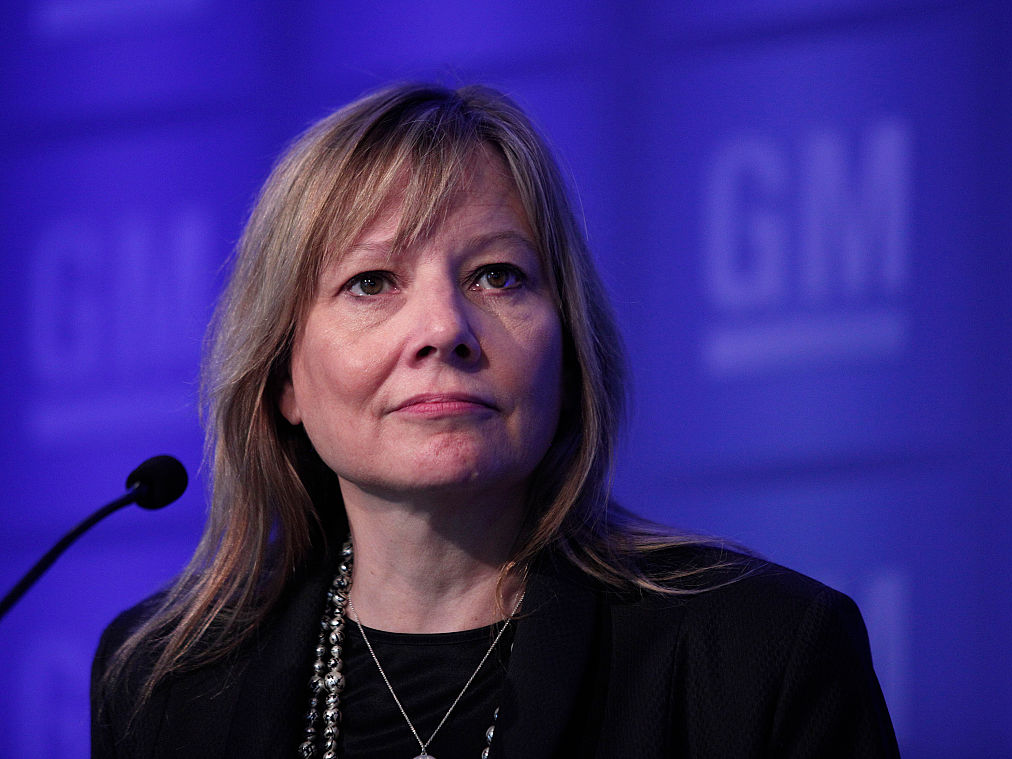- CEO Mary Barra has transformed General Motors by cutting unprofitable ventures and investing in the future.
- Her focus on efficiency and efficacy has driven the decisions she’s made in over 35 years of working at the company.
- Post-bankruptcy, GM has become consistently profitable, built up a healthy balance sheet, and become a leader in electric and autonomous car technology.
When General Motors CEO Mary Barra was the company’s vice president of global human resources, she thought the company’s dress code was too complicated. So she condensed it to two words: “Dress appropriately.”
It was a simple idea, but not an easy one, as the managers beneath her complained that their employees were taking advantage of the rule change and coming to work in unprofessional attire. In two cases she recounted in 2015, she told the managers to be honest with their employees and tell them about their concerns. Barra wanted her managers to become leaders, not rule enforcers.
“I want them to take ownership of the rules and say, ‘You’re accountable to lead your team,'” she said at the 2015 Catalyst Awards.
The anecdote reveals a lot about Barra's management style and philosophy, which, broadly, involves figuring out the necessary parts of an operation and removing everything else. She's done that repeatedly in over three decades of working for GM, where she's impressed colleagues and analysts with her ability to solve problems.
Barra focused on making GM more efficient as she rose through the company
She started on the factory floor when she was 18, inspecting as many as 60 fender and hood panels per hour, she told Esquire. The job helped pay for her degree in electrical engineering from the General Motors Institute (now called Kettering University). She went back to GM after graduating and was quickly identified as a future management candidate, eventually winning a fellowship from the company and getting an MBA from Stanford.
With her master's degree in hand, she rose through the company, serving as the head of manufacturing engineering, human resources, and product development. At each step, she sought to increase efficiency and decrease distractions, streamlining the company's manufacturing, internal communications, organizational, and product development processes.
Prior to becoming to becoming CEO, she made her most visible impact as the senior vice president of global product development, where GM put out award-winning cars, improved sales, and cut costs. She also won praise for her ability to communicate with employees and make them feel valuable.
"She engenders loyalty through example and kindness," a colleague told Reuters in 2014.
Another added that "she makes sure everyone is heard" before making a decision.
As CEO, Barra has cut unprofitable ventures and invested in the future
While Barra's promotion to CEO in 2014 made sense from within the company, Wall Street had its doubts.
"Her reputation is (as) a bit of a lightweight," an investment banker who had worked with GM told Reuters after her promotion was announced. "She has not distinguished herself in any heavy-duty operating role. She's sort of a blank slate."
Barra had the opportunity to distinguish herself immediately. Less than two months into her new role, GM began a recall that would reach over 2.5 million cars due to broken ignition switches that could turn off cars while they were driving and prevent airbags from functioning during crashes. Barra didn't try to deflect blame to her predecessors or the employees beneath her. Instead, she took the blame head-on; a simple solution, but not an easy one.
Since navigating that early crisis, Barra has completed GM's post-bankruptcy recovery, transforming the company from a stodgy symbol of the old guard to a leader in automotive innovation. Throughout, her decisions have echoed those she made before becoming CEO: Identify what's necessary and cut everything else.
This has meant removing GM from an unprofitable Russian market, selling Opel (the company's former European branch), and decreasing manufacturing in Australia. She's used these divestments as an opportunity to focus GM's attention on the more lucrative American and Chinese markets, as well as the kinds of investments that could keep GM competitive over the long term.
Under her watch, GM has started a ride-sharing service (Maven), bought a self-driving startup (Cruise Automation), invested in Lyft, donated to non-profits that promote STEM education for women, and beat Tesla to the affordable electric car market with the Chevy Bolt. Now, the company is testing its fourth generation of autonomous driving technology (most companies haven't passed their first), posting consistent quarterly profits, and building up a sizable balance sheet.
While that may sound like substantial progress to an outside observer, don't expect Barra to become complacent.
"Don't confuse progress with winning," she told Esquire in 2016. "If the world is improving at 10 percent and you're improving at 2 percent, you might be improving, but you're losing."
If Barra's investments pan out, she won't have to worry about losing for a long time.

